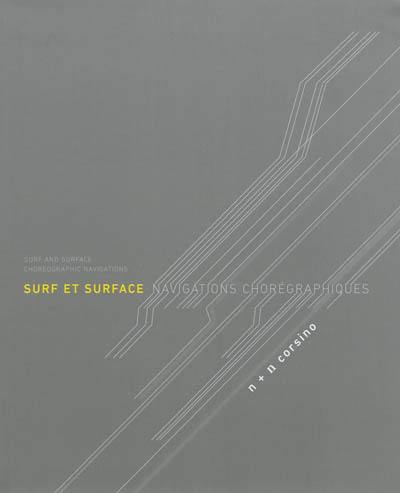
Fiche technique
Format : Broché
Nb de pages : 127 pages
Poids : 400 g
Dimensions : 21cm X 25cm
ISBN : 978-2-916639-20-8
EAN : 9782916639208
Surf et surface
navigations chorégraphiques
Quatrième de couverture
Porter la danse hors de l'espace scénique, trouver des lieux singuliers c'est référer au voyage dans la carte. La littérature narrative est très souvent accompagnée de cartes, d'atlas. La cartographie des lieux entretient un rapport ambivalent à la chorégraphie et génère un espace de narration, elle permet de comprendre que la linéarité du récit s'inscrit en réalité dans un système de relations spatiales permanentes.
L'élargissement du champ chorégraphique à d'autres objets que le corps révèle son invisibilité temporaire. La trouée dans l'espace de l'image prolonge à un niveau macroscopique l'univers électronique discret et se continue par différentiation à d'autres éléments tels que les lieux, les cadres, l'emboîtement des séquences, les objets, les machines.
Ce n'est plus l'écran que l'on regarde on entre par des cheminements semés ici et là. Le corps est tantôt deviné, tantôt entr'aperçu, il passe le relais, s'évanouit dans la suspension du montage. La danse est toujours là, même si le corps disparaît parce que le mouvement écrit, choisi, déterminé se compose infiniment laissant le lecteur libre d'associer les éléments relatifs à son propre voyage, à sa propre énigme.
Taking dance away from the stage, finding unusual places, is to refer to the journey in the map. Narrative literature is often accompanied by maps or atlases. The cartography of places maintains an ambivalent relationship with choreography and engenders a space of narrative, it allows us to understand that the linear nature of the story is in reality part of a system of permanent spatial relationships.
The extension of the choreographic field to objects other than the body reveals its temporary invisibility. The gap in the space of the image extends the discrete electronic world to a macroscopic level and carries on by differentiation from other elements such as places, frames, the interlocking of sequences, objects and machines.
It is no longer the screen that we are looking at You enter through pathways scattered here and there. The body is sometimes guessed, sometimes glimpsed, it passes on the baton, vanishes into the suspension of the edit. The dance is still there, even if the body disappears, because the movement written, chosen and determined, is composed infinitely, leaving the reader free to associate the elements relating to his own journey, his own enigma.





